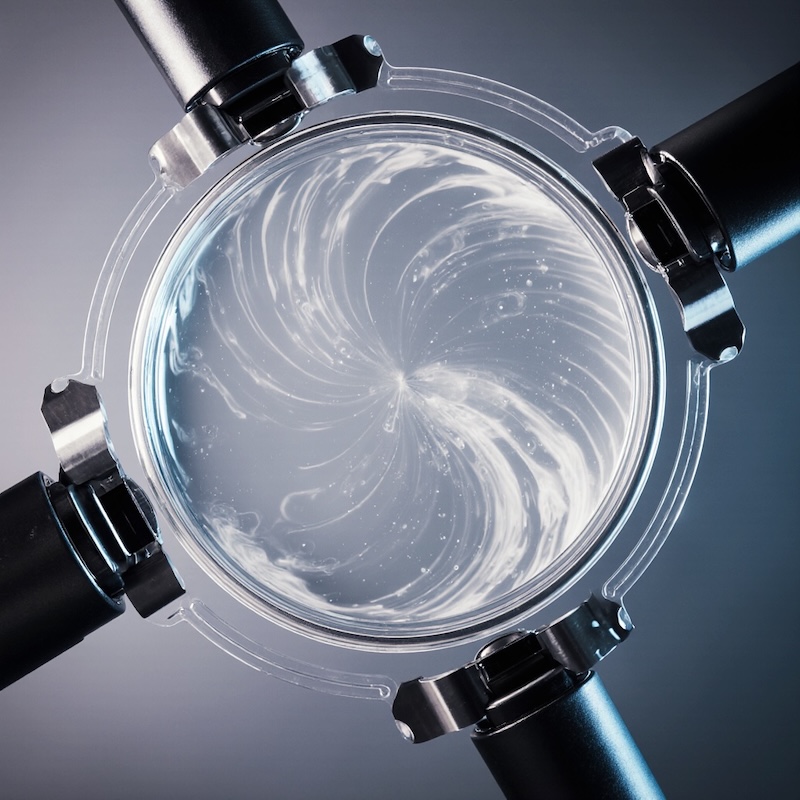
A recent research demonstrates real-time control of weakly conducting fluid flows using Lorentz Forces, powered by Koopman-based machine learning.
Controlling how fluids flow isn’t just something for nature documentaries 🌊—it’s at the cutting edge of engineering research. From designing faster planes ✈️ to creating more efficient industrial mixers 🧪, fluid control has huge applications. But how do you steer a flowing liquid, especially one that can’t be touched? 🤔
That’s exactly what a team of researchers from the Czech Technical University and LAAS-CNRS tackled in their latest study on real-time control of magnetohydrodynamic (MHD) flows. And the best part? They did it without touching the fluid at all—using only Lorentz Forces ⚡🧲, and clever machine learning tricks 🖥️.
Let’s break it down in plain language—engineer-to-engineer!
In simple terms, MHD deals with how electrically conducting fluids behave in the presence of electric and magnetic fields. Think seawater 🌊, liquid metals 🩶, or electrolytes 🧪.
✅ Why it's cool:
✅ Where it’s useful:
But here's the catch: fluids are already notoriously hard to control because of turbulence and chaos. Add electromagnetic effects and things get way more complicated. 😬
The researchers used a shallow dish filled with a weakly conducting liquid (water + sulfuric acid). Around it, they placed:
Here's the magic sauce:
Electric field + Magnetic field = Lorentz Force, which pushes and pulls the liquid in different directions.
By tuning the electricity and magnet strength in real-time, they could shape the flow into vortices, jets, and other patterns! 🎨
Now, you might wonder: how can we predict and control such a chaotic system in real time?
Instead of solving complex fluid equations (which take hours to compute), they used a data-driven approach powered by the Koopman operator.
They trained the model by observing how the fluid moved in response to different electric/magnetic inputs. Using this, they built a Koopman-based Model Predictive Controller (KMPC) that predicts future flow and adjusts controls on the fly! 🖥️🤖
One of the most impressive feats? The whole thing runs on a standard laptop 💻!
The team conducted multiple experiments to test flow control:
They created different flow shapes:
Result?
In all cases, the fluid adapted to the desired pattern within seconds and remained steady—an incredible feat for chaotic fluids!
They even controlled vorticity (how much the fluid spins):
This study isn’t just a fancy lab experiment—it shows that:
✅ Advanced mixing systems 🧪
✅ Efficient cooling for electronics 🖥️
✅ Contactless medical devices 💉
✅ Smarter fluid-based robotics 🤖
✅ Better flow control in aerospace and automotive industries 🚀🚗
This research shines a spotlight on a future where engineers don’t have to wrestle with complicated fluid equations, but can train models and use data to control complex systems in real time.
The fusion of:
And all of this is run on a laptop—proving how accessible and scalable this technology can be for engineers worldwide. 🌍
| ✅ Feature | 💡 Details |
|---|---|
| 🧲 Control Type | Electric & Magnetic Fields |
| 🛠️ Method | Koopman Model Predictive Control (KMPC) |
| ⚙️ Setup | 4 electrodes + 4 electromagnets + camera |
| 💻 Hardware | Standard Laptop (real-time) |
| 🌀 Controlled | Flow velocity & vorticity |
| 🎯 Applications | Mixing, cooling, robotics, aerospace |
This work is an excellent showcase of how engineering, machine learning, and fluid mechanics can merge into practical, high-performance systems. 🌟
As fluid engineers, researchers, or industrial designers, this approach offers a new way to think about flow control—faster, smarter, and contactless.
Magnetohydrodynamics (MHD) - How liquids that conduct electricity (like saltwater or plasma) behave when exposed to electric ⚡ and magnetic 🧲 fields.
Lorentz Force - The invisible push ✋ a fluid feels when electric and magnetic fields interact—like steering water with magnets!
Model Predictive Control (MPC) - A smart controller that predicts the future 🔮 of a system and adjusts actions in real time for best performance. - More about this concept in the article "Turning Waste into Watts 💧💡 How Smart Control is Powering Energy-Free Wastewater Plants!".
Koopman Operator - A mathematical trick that turns complex, chaotic systems into simple linear models 📝 so computers can predict them fast. - More about this concept in the article "🚄 Leveling Up Maglev Trains: How Data Makes Them Float Better!".
Vorticity - How much a fluid spins or swirls 🌀—high vorticity means strong circular motion, like a mini whirlpool!
Particle Image Velocimetry (PIV) - A camera-based technique 📷 that tracks particles floating in liquid to measure how the fluid flows.
Source: Adam Uchytil, Milan Korda, Jiří Zemánek. Real-time control of a magnetohydrodynamic flow. https://doi.org/10.48550/arXiv.2507.12479
From: Czech Technical University in Prague; LAAS-CNRS, Université de Toulouse.